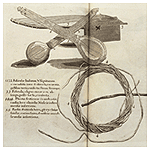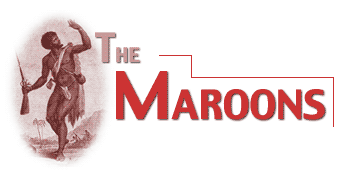Culture means many things, but we can all agree that how and where a person has been raised helps to define their way of life. The shared beliefs and forms of a certain culture include characteristics such as language, material traits, type of music and the instruments used, marital beliefs, social customs, and just everyday rules of life. In earlier centuries, some traveled from Europe to start a new life, and of those, many took it upon themselves to transport African natives along with them. Despite the fact that they were forced to come to an unfamiliar place, these enslaved migrants continued practicing the beliefs known to them in Africa. For instance, many of the ancestors of present-day Jamaicans, like the Maroons, came from Africa. And, because of the characteristics of the culture these ancestors brought, modified, and preserved, historians have been able to identify these forced migrants, including many of the Maroons, as "Koromantis"—people from the Akan culture. Because of the persistence of earlier generations, present-day descendents are able to see how their modern culture came about.
Jamaican planters used the term Koromanti was to refer to slaves purchased from the Akan region of West Africa, presently known as Ghana. In the earliest years of the British settlement the Koromantis were the most stubborn, and yet, the most respected. Many of them were experienced with military methods because of the fighting and wars they encountered in Africa. They were a very proud and disciplined group. The British felt these characteristics would make them good slaves; the Koromantis’ pride and discipline might make them want to do their work to the best of their ability. Slaveowners often put them in charge of a certain section of a plantation to make sure the others were working properly. But the Koromantis, who came from a natural environment very similar to that of Jamaica, were also able to rebel against slavery and run to the mountains of St. Ann, Clarendon, and Elizabeth, the original homes of the Jamaican Maroons. While the planters feared to pursue the runaways into the hills, the Koromanti used the mountains and their own disciplined way of life as an advantage. In the mountains, they developed their own way of life by incorporating the various cultures with those of the other runaway slaves who made up the diverse Maroons.
 In fact, among the Maroons—and among the people brought to Jamaica as slaves in general—Akan cultural influences predominated. One of the characteristics most useful in pinpointing a group’s origin is their language. This is very important when speaking of the Maroons, because many of the slaves did not speak the same language as other slaves that joined them throughout the years. Many of the slaves brought over came from different parts of Africa, and therefore, were unable to communicate by verbal means with other slaves. Instead, they often used body language to communicate; in particular hand gestures and various physical actions. As time passed on, verbal communication improved among the slaves because they learned to communicate using their own language they invented using variations of their previous language and that of the people who owned them. According to an author of that time, Bryan Edwards, " they [Maroons] are in general ignorant of our language". He said that their language was a mix between African dialects, Spanish, and broken English. In fact, among the Maroons—and among the people brought to Jamaica as slaves in general—Akan cultural influences predominated. One of the characteristics most useful in pinpointing a group’s origin is their language. This is very important when speaking of the Maroons, because many of the slaves did not speak the same language as other slaves that joined them throughout the years. Many of the slaves brought over came from different parts of Africa, and therefore, were unable to communicate by verbal means with other slaves. Instead, they often used body language to communicate; in particular hand gestures and various physical actions. As time passed on, verbal communication improved among the slaves because they learned to communicate using their own language they invented using variations of their previous language and that of the people who owned them. According to an author of that time, Bryan Edwards, " they [Maroons] are in general ignorant of our language". He said that their language was a mix between African dialects, Spanish, and broken English.
While the Maroons’ language was not uniformly a product of Akan origins, we can find extensive Akan influence on the Maroons and Jamicans of African origin generally by looking at naming patterns. These patterns can "reveal the extent to which concepts of family, lineage, and kinship were retained beyond the Atlantic crossing." By doing this, they have found that many of the names used by the Maroons and even descendants of slaves today, come from Africa, and often from particular regions of Africa. One of the most recognizable African naming patterns in both North America and the Caribbean is the West African custom of "day names." This means that each day was assigned a particular name, and a baby was named according to which day of the week he or she was born. Akan day names predominated among the Maroons and other African people of Jamaica. For example, a baby born on Sunday was named Kwesi in Ghana and Quashie in Jamaica.
| AKAN | JAMAICAN MAROONS | | | | Male | Female | | Sunday | Kwesi | Quashie | Quasheba | | Monday | Kwadwo/Kojo | Cudjoe/Kujo | Juba | | Tuesday | Kwabena | Bene | Cobena | | Wednesday | Kweku | Quaco | Cooba | | Thursday | Kwau | Quaw | Aba | | Friday | Kofi | Cuffe | Fiba | | Saturday | Kwame | Quamin | Mimba | | | | | | | Dr. Edmund Abaka from the University of Miami and the book Language in Exile, Barbara Lalla & Jean D’Costa provided the names shown.
|
According to the book Language in Exile, these names often carried specific connotations to them. Both male and female names for each day had a different meaning. For instance, the Monday male day-name Cudjoe means strong-headed and the female version means clever. Also, the Friday male day-name, Cuffee, means hot-tempered; while the female Friday day-name, Fiba, means gentle and mild.
 Other links between the culture of the Jamaicans and their Africans forebears include their music and instruments used. In the article "African Music in 17th Century Jamaica," Richard Rath explains the how an English physician, Hans Sloane of the Royal Society discovered that the music played and instruments used by the slaves of Jamaica were similar to the sounds of African music. He attended a festival held by the slaves and found that the music and instruments were unfamiliar to the Europeans and that it "sounded" like African music. He took a sketch of the instruments they used and found that the way they were made is the same way the Africans made their instruments. Among these were included the central African lute, but also the eight-stringed harp, a Koromanti instrument. Instruments were often wound with fiber iun the Gold Coast style. The style of the dances, including style of movements, done by the Jamaicans were also very similar to that of the Koromanti. Other links between the culture of the Jamaicans and their Africans forebears include their music and instruments used. In the article "African Music in 17th Century Jamaica," Richard Rath explains the how an English physician, Hans Sloane of the Royal Society discovered that the music played and instruments used by the slaves of Jamaica were similar to the sounds of African music. He attended a festival held by the slaves and found that the music and instruments were unfamiliar to the Europeans and that it "sounded" like African music. He took a sketch of the instruments they used and found that the way they were made is the same way the Africans made their instruments. Among these were included the central African lute, but also the eight-stringed harp, a Koromanti instrument. Instruments were often wound with fiber iun the Gold Coast style. The style of the dances, including style of movements, done by the Jamaicans were also very similar to that of the Koromanti.
Another similarity between the Jamaicans and the Akan included what Edwards called the "prevalence of Obi," which is a sort of witchcraft now often called Obeah. Edwards argued that, like all nations of Africa, the Jamaican Maroons believed that the older men were wizards, or Obeah-men. These Obeah-men were extremely intelligent and would use special herbs and medications to perform weird acts. For example, they would pretend to raise someone from the dead by giving them something to slow their heart down, causing people to believe they were dead, and then the Obeah-man would pretend to resurrect the "corpse." This is one of the reasons the Maroons, the most independent and rebellious blacks in Jamaica, tended to come from the Koromanti, one of the most prized group of slaves in Jamaica. They used Obeah to make others, including planters, believe they had power.
Maroon Culture mostly originated from beliefs and ways of the Africans; especially the Koromantis from the Akan region. Because of this, historians have been able to trace where many of the ancestors of the people of the New World actually originated. This allows descendants of these slaves, and the Maroons, to learn more about their heritage and also, why their culture may be different, but at the same time, very similar to the cultures of the people of the Akan region of Ghana.
|





